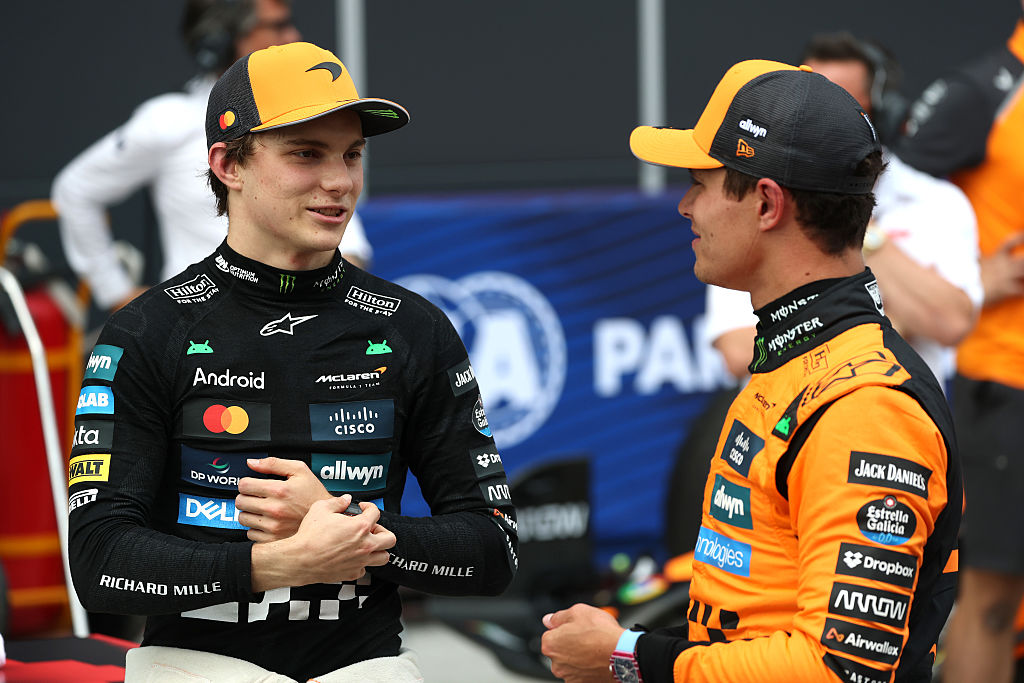With two laps to go in the Hungarian Grand Prix, Oscar Piastri jinked his car toward the inside of Turn 1 and Lando Norris just took the corner as if nothing was different to any other lap.
Piastri was behind and trying to take victory, having closed in on his one-stopping teammate. The lock-up that followed saw the pair come perilously close to contact, but there was no touch, and aside from a warning from Piastri’s race engineer Tom Stallard, it was play on.
“Remember how we go racing,” Stallard said.
That was a reference to McLaren trying to ensure the drivers limit the level of risk with which they attempt moves on each other, with team principal Andrea Stella actually praising the way the two drivers handled the situation.
“When you have two great drivers, like Lando and Oscar, who race for a victory in a Formula 1 grand prix and race for the drivers’ championship, it’s always going to be very close,” Stella said.
“That was firm racing; it was fair racing at the same time. It was definitely within our principles. We had a bit of a lock-up with Oscar, but at the same time, Lando left some space because he knew that Oscar would have been at the limit of braking.
“We keep being very proud of how Lando and Oscar go racing. I think this is a great way of honoring Formula 1 racing. These are the values of McLaren.
“It’s going to be, hopefully, a matter between the two McLaren drivers – even if we saw Ferrari was in the competition for the victory for two-thirds of the race [today] – and I think we have a very entertaining and interesting final part of the season.”
McLaren allowing a race to develop in the way it did was entertaining, with Norris gambling on a one-stop strategy having been stuck in fourth place throughout the first stint of the race. Piastri, meanwhile, was two-stopping and it appeared his side of the garage focused on Charles Leclerc at at that stage.
“I think we had to try and do something to beat Leclerc because it wasn’t obvious that we just had enough pace to blow past him and go and win that way,” Piastri said of his strategy. “We tried something. Was it the right thing in the end? I don’t know, but it’s always much easier when you’re the car behind to take that risk.
“For Lando, there was virtually nothing to lose by trying a one-stop race. For myself, potentially there was. We’ll look back and see if there was anything we should have done differently, but a two-stop was always the plan before the race, so it wasn’t even really discussed that much about doing a one-stop. It was certainly a gamble.
“In the race, I got asked about it. Very difficult to know from the cockpit what is going, to be the best thing to do. Like I said, when you’re the car behind, your risk-reward ratio is always much different, so there’s always that.
“Could we have matched Lando? That’s, I guess, the question that I don’t have the answer to. I guess that’s the only thing. We wanted to try and win the race as well, and the best way of trying to beat Lando is by trying to win the race as well. That was obviously an intention, but I think we’ll definitely analyze if there was something we could have done a bit differently.”

It was worth a try, and he still kept it clean. That’s what matters. Joe Portlock/Getty Images
From Norris’ point of view, the strategy cards fell his way, but the execution still needed to be right. It wasn’t luck that gave him the win, even if there was some fortune to the fact he dropped to fifth in line and was backed into a corner where he had to try something different to gain track position against George Russell at the very least.
